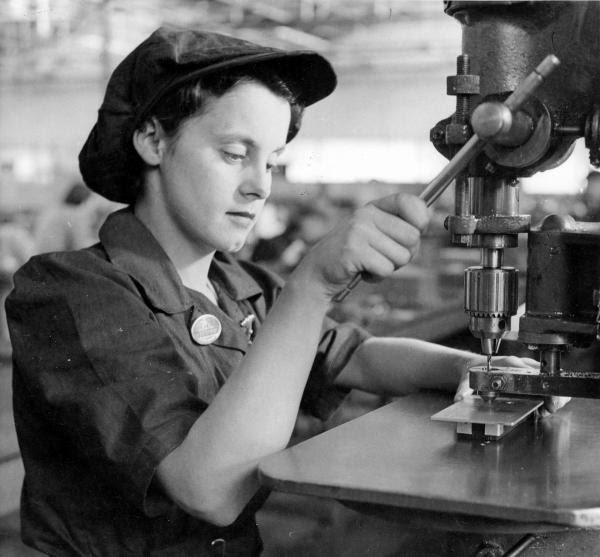This week, an idea for making big philosophical issues from history accessible to young children, inspired by the work of teachers at Beech Green School, Quedgeley, during a session where were planning philosophy into the curriculum.
r
The example is from World War Two, but the approach is flexible. The idea is to have two stimuli, one the “full size” stimulus from the topic you are exploring, the other (which you present first), keeping the same features but scaled down to a school, domestic or other everyday setting within the experience of the children.
r
Full Size Stimulus
r
r
During the war, with the men away fighting, lots of jobs that had always been for men had to be filled by women.
During the war, with the men away fighting, lots of jobs that had always been for men had to be filled by women.
Harry worked in a factory. All the people doing the same job as him were men. When the war started, he was conscripted, so he had to go and fight. Lucy, his sister, was employed to do his job. When the war finished, he came back and wanted his old job back.
r
Whose job is it?
r
Scaled Down Stimulus
r
Just after school, Bob is watching the big TV in the sitting room. He is sitting in the best seat. It starts to rain, and his mum calls him outside to help her get the washing in. When he gets back inside, his sister Jenny, who always gets back from her school later, is sitting in the seat. He wants his seat back.
Just after school, Bob is watching the big TV in the sitting room. He is sitting in the best seat. It starts to rain, and his mum calls him outside to help her get the washing in. When he gets back inside, his sister Jenny, who always gets back from her school later, is sitting in the seat. He wants his seat back.
r
Whose seat is it?
r
Teaching Sequence
r
Use the scaled down stimulus first, and hear their arguments. Then introduce the full-size stimulus and repeat the process. They will likely start making comparisons between the two stimuli, but you can encourage them to test the analogy. What features do they share? Do they have to reach the same conclusion in both cases, or are the two situations sufficiently different that they can have different views without being inconsistent? You might go back to the scale model after looking at the full size version, and see if views have changed.
Use the scaled down stimulus first, and hear their arguments. Then introduce the full-size stimulus and repeat the process. They will likely start making comparisons between the two stimuli, but you can encourage them to test the analogy. What features do they share? Do they have to reach the same conclusion in both cases, or are the two situations sufficiently different that they can have different views without being inconsistent? You might go back to the scale model after looking at the full size version, and see if views have changed.
r
Constructing a Scale Model
Constructing a Scale Model
r
It’s a good idea to try to make the two situations closely comparable. Try to focus each situation on a small number of human characters, as this makes it easier to grapple with and care about. Try to duplicate important features of the situation in the scale model. For example, in both these cases:
It’s a good idea to try to make the two situations closely comparable. Try to focus each situation on a small number of human characters, as this makes it easier to grapple with and care about. Try to duplicate important features of the situation in the scale model. For example, in both these cases:
A male is in a position he values.
He is called away from it by an authority.
A female takes his place.
She would not normally get the opportunity to do so (I staged the second version so that Jenny always get back from school later).
The male wants “his” position back.
He is called away from it by an authority.
A female takes his place.
She would not normally get the opportunity to do so (I staged the second version so that Jenny always get back from school later).
The male wants “his” position back.
r
Who should have the position now?
r
These are a little like the thought experiments used in academic philosophy, which are sometimes designed to elicit thinking about an important issue through considering a situation which is outlandish enough that we engage with it with fresh eyes, free from the ingrained responses we might have to the real-world situation.
r
Best wishes,
r
Jason
